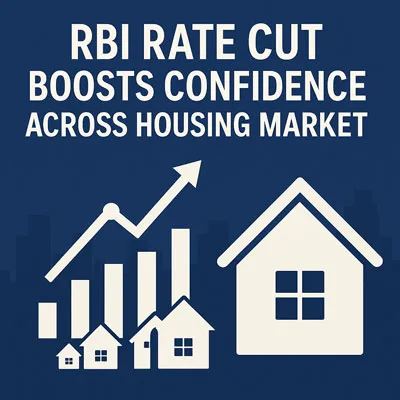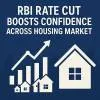Technology has advanced to such an extent that software tools can now analyse energy levels and improve the sustainability of a design, and consequently, the building. Read on to know how...
The world is changing; the economy is changing; and architectural practice is changing. Designing energy and resource-efficient buildings in several locations is no longer optional but mandatory. While owners have constantly sought designs that are cost-effective to operate and will command premium lease values, research reveals that green buildings (for example, LEED®-certified) are more likely to deliver on these criteria. A 2008 report by McGraw Hill Construction finds a 13.6 per cent decrease in operating costs from green buildings and a 10.9 per cent increase in building values as reported by architects, engineering firms, contractors, and owners over the past three years. More pressing is the growing number of local and national regulations that mandate targets for energy and resource efficiency as well as carbon emission reductions in new and renovated buildings. Indeed, these government initiatives have been put in place to help reduce greenhouse gas emissions and slow down our impact on climate change, but they are also instituted to reduce dependence on unpredictable markets for oil as an energy source and, more recently, to help stimulate the global economy.
Sustainable design in practice
Design decisions made early in the process can deliver significant results when it comes to the efficient use of vital resources. Employing sustainable analysis tools helps architects and engineers make better informed decisions earlier in the design process and enables them to have a greater impact on the efficiency and performance of a building's design. Historically, analysis software could be complex and required special training, making it unsuitable for infrequent users such as architects or designers. Sustainable analysis tools facilitate the proficiency of users by providing access to immense stores of data and the ability to more quickly iterate for optimal sustainable designs.
Designing and delivering sustainable projects can be complex. It requires close coordination across different project stages, from design through construction and operation. Many firms are looking for the best way to integrate building information modelling (BIM) technology with sustainable design and analysis tools.
Analysing building design
BIM enables architects and engineers to use digital design information to analyse and understand how their projects perform before they are built. Developing and evaluating multiple alternatives at the same time enable easy comparison and better sustainable design decisions.
A computable design model is devised for sustainability analyses, even during early conceptual design. As soon as the layout of a building's walls, windows, roofs, floors, and interior partitions (elements that define a building's thermal zones) are established, the information employed to create the design model can be used to perform analyses. Performing these analyses in a CAD workflow is a fairly difficult undertaking as the CAD model has to be exported and carefully made to work with analysis programmes.
Whole building energy, water and carbon analyses
There are web-based services for architects that enable faster, more accurate, whole-building energy, water, and carbon emission analyses. Built specifically for architects and using green building extensible mark-up language for easy data exchange across the Internet, the web-based service was one of the first engineering analysis tools to deliver easy-to-use inter-operability between building designs and sophisticated energy-analysis software programmes.
Energy analysis
The web-based service facilitates quicker analyses of a building design from within one’s own design environment, directly over the Internet. This helps streamline the entire analysis process and enables architects to get quicker feedback on their design alternatives, making green design more efficient and cost-effective. Based on the building's size, type, and location, the web-based service determines the appropriate material, construction, system and equipment defaults by using regional building standards and codes to make intelligent assumptions. Using simple drop-down menus, architects can quickly change any of these settings to define specific aspects of their design – a different building orientation, a lower U-value window glazing, or a four-pipe fan coil HVAC system. The service uses precise hourly weather data as well as historical rain data that are accurate within 20 km of the given building site. It also uses emission data for electric power plants across the US and includes the broad range of variables needed to assess carbon neutrality.
Analysis results
Usually, the service calculates a building's carbon emissions within minutes, and the user is able to view the output in a web browser, including the estimated energy and cost summaries as well as the building's carbon neutral potential. Users can then explore design alternatives by updating the settings used by the service and rerunning the analysis, or by revising the building model itself in the application and then rerunning the analysis. The output also summarises water usage and costs as well as electricity and fuel costs; it also calculates an ENERGY STAR score, estimates photovoltaic and wind energy potential,
calculates points towards LEED daylighting credit and estimates natural ventilation potential.
Working with the environment
To mitigate a building's impact on the environment, it is important to first understand how the environment will impact the building. Built specifically by architects and focused on the building design process, environmental analysis tools enable designers to simulate the performance of their building projects right from the earliest stages of conceptual design.
These combine a wide array of analysis functions including shadows, shading, solar, lighting, thermal, ventilation, and acoustics with a highly visual and interactive display that presents analytical results directly within the context of the building model. This visual feedback enables the software to communicate complex concepts and extensive datasets more effectively and helps designers quickly engage with multifaceted performance issues at a time when the design is sufficiently 'plastic' and can be easily changed.
Analysing a design in the context of BIM
Design models can be exported to compatible formats and imported directly into the tool for simulation and analysis throughout the design process. At the onset of the design process, massing models can be used in combination with site analysis functionality to help determine the optimal location, shape, and orientation of a building design based on fundamental environmental factors such as daylight, overshadowing, solar access, and visual impact.
As the conceptual design evolves, whole-building energy, water and carbon analyses can be conducted using integrated access to the design in order to benchmark its energy use and recommend areas of potential savings. Once these fundamental design parameters have been established, the design software can be used again to rearrange rooms and zones, to size and shape individual apertures, to design custom shading devices, or to choose specific materials based on environmental factors such as daylight availability, glare protection, outside views and acoustic comfort.
Visual feedback
Perhaps the most unique aspect of design software is the visual and interactive display of analysis results. The inability of the designer to easily interpret the results of analyses is often the biggest failing of building performance analysis software. The software provides actionable feedback to the designer in the form of text-based reports as well as visual displays; these visual displays are more than just charts and graphs. Analysis results are presented directly within the context of the model display: shadow animations resulting from shadow casting analysis, surface-mapped information such as incident solar radiation, and spatial volumetric renderings such as daylight or thermal comfort distribution in a room. This type of visual feedback enables easier understanding and interaction with analysis data, often in real time. For instance, a designer can rotate the view of surface-mapped solar radiation looking for variations over each facade, or watch an animated sequence of solar rays to see how sunlight interacts with a specially-designed light shelf at different times of the year.
Ongoing building performance analysis
During conceptual design, the software and design model can be used for a variety of early analyses. For example, the designer can perform overshadowing, solar access, and wind-flow analyses to iterate on a form and orientation that maximises building performance without impinging on the rights-to-light of neighbouring structures.
As the design progresses and elements that define a building's thermal zones are established, the model can be used for room-based calculations such as average daylight factors, reverberation times and portions of the floor area with direct views outside. Eventually the model can be used for more detailed analyses, such as shading, lighting, and acoustic analysis. For example, the designer can use multiple tools in conjunction with a shading louver design model to simulate how the design will work under different conditions throughout the year.
Summary
The consistent, computable data that comes from design software combined with the breadth of performance analysis and meaningful feedback of the various tools work in combination to help reduce the cost and time to perform energy modelling and analysis. The feedback from these analyses helps architects and other users to optimise the energy efficiency of their designs and work towards carbon neutrality earlier in the design process-a key ingredient not only to incorporate energy efficiency into standard building design practices but to mitigate the carbon footprint of our built environment.
About the author:
Manideep Saha is Head - AEC (Architecture, Engineering and Construction) and Geospatial Solutions at Autodesk India & SAARC. He has been associated with the Application Software and Systems Integration business for almost 20 years in various capacities and geographies in India, SAARC and USA.
If you have a new and innovative technology to share, email us at feedback@ASAPPmedia.com




















